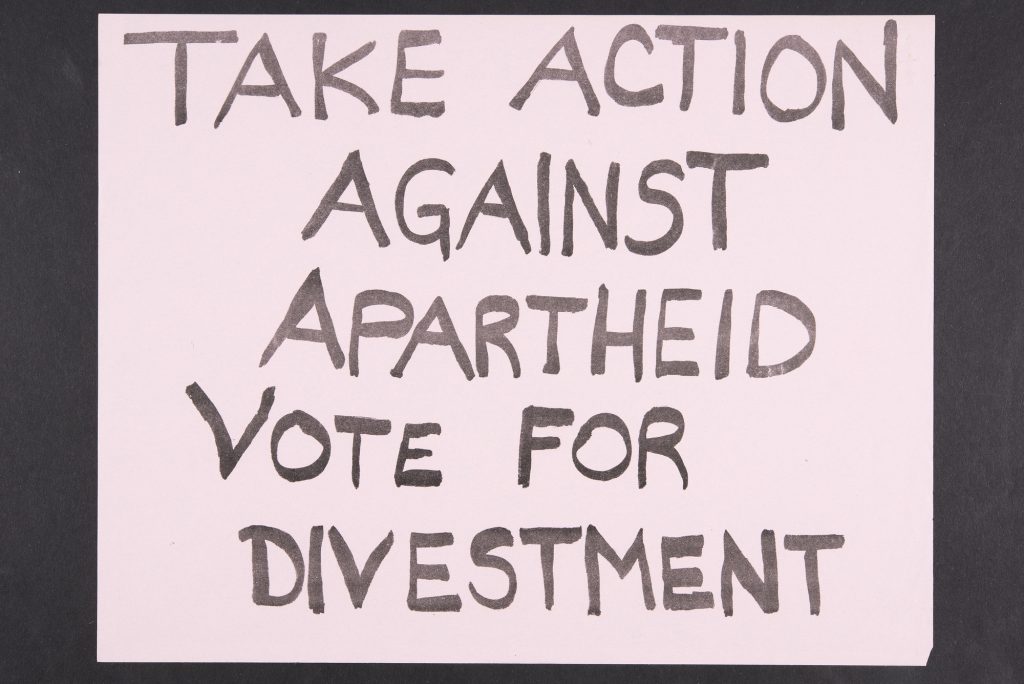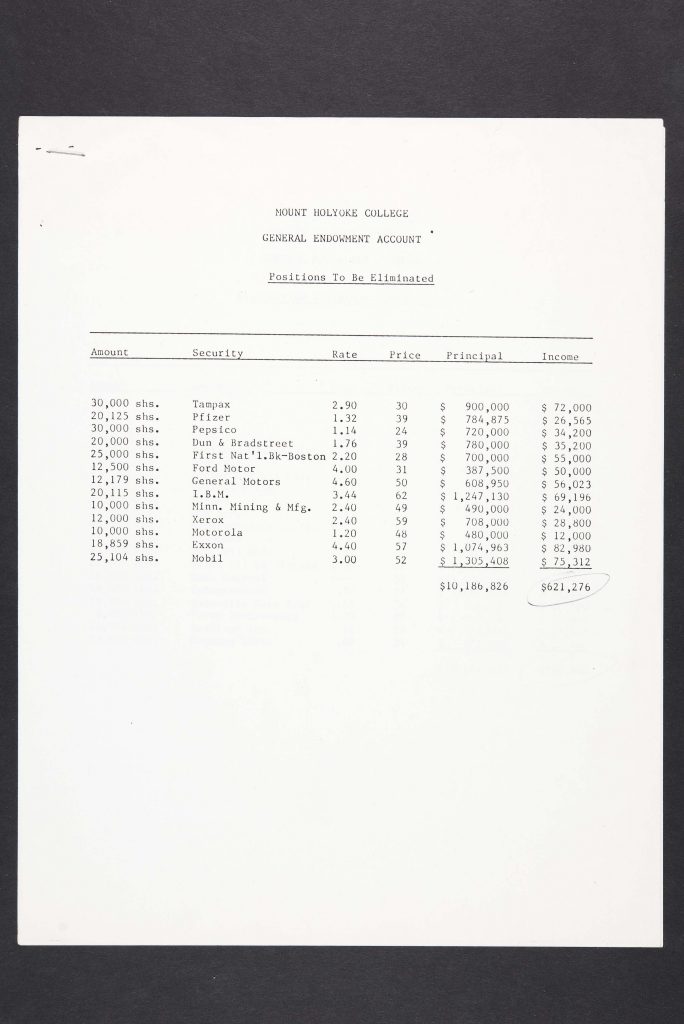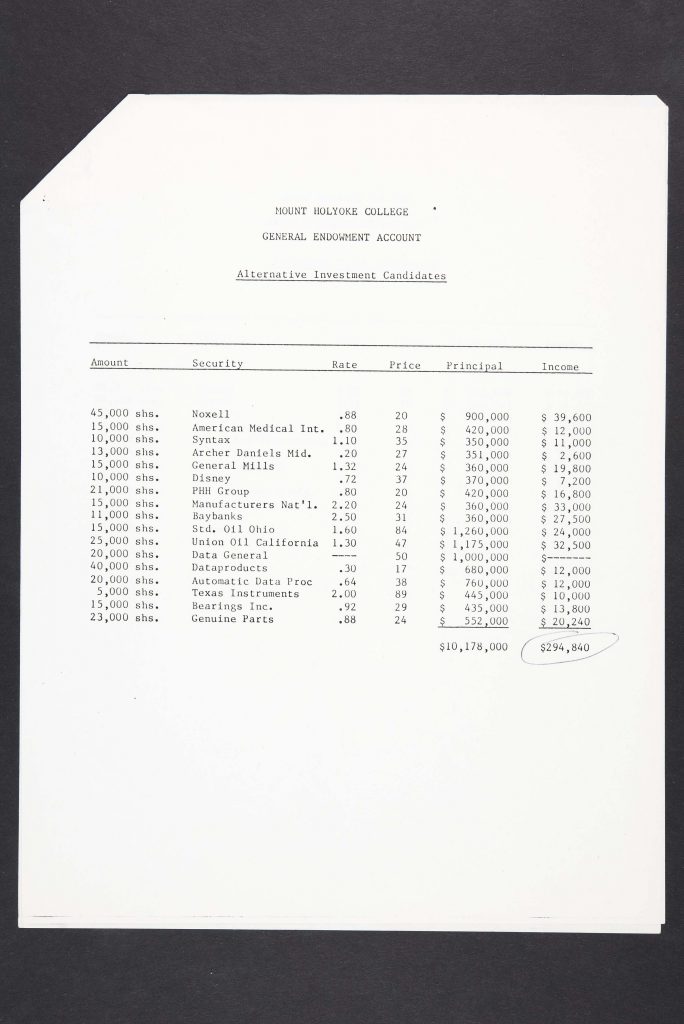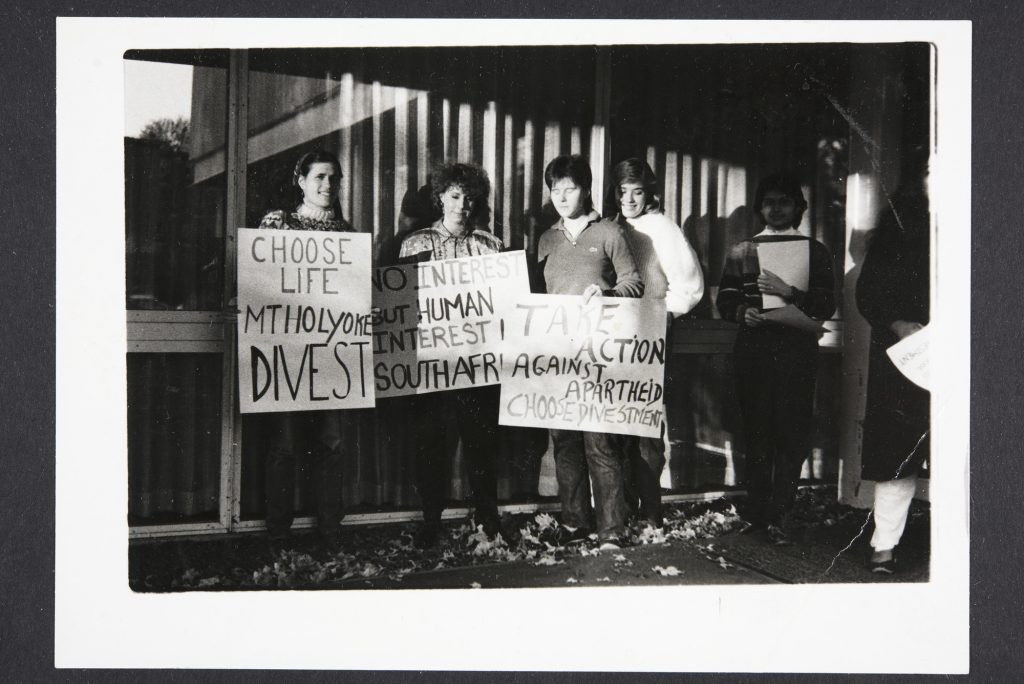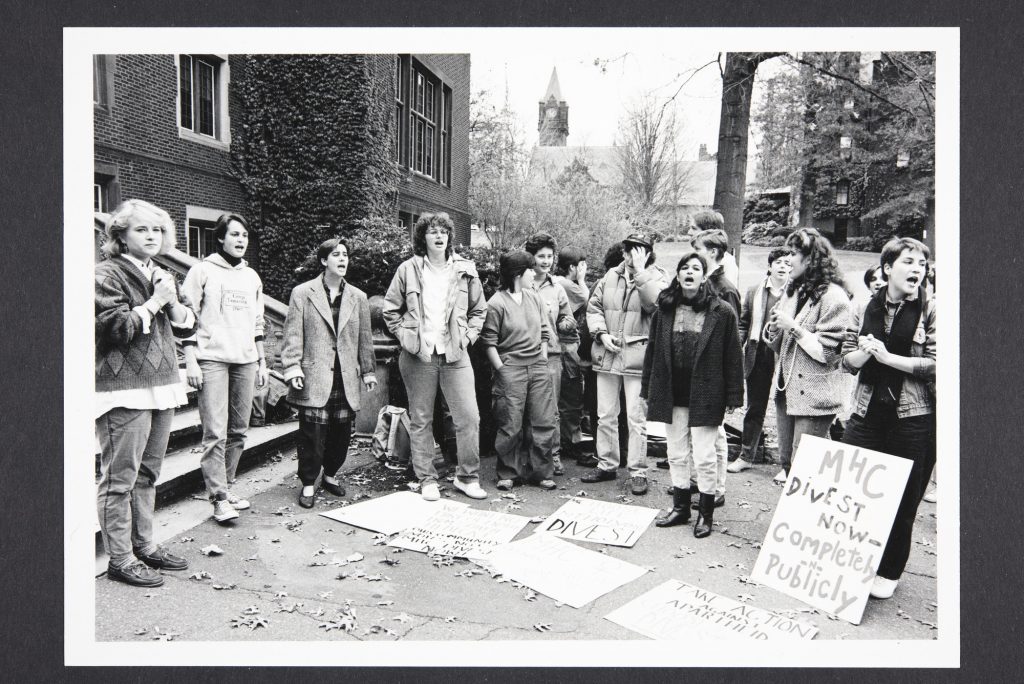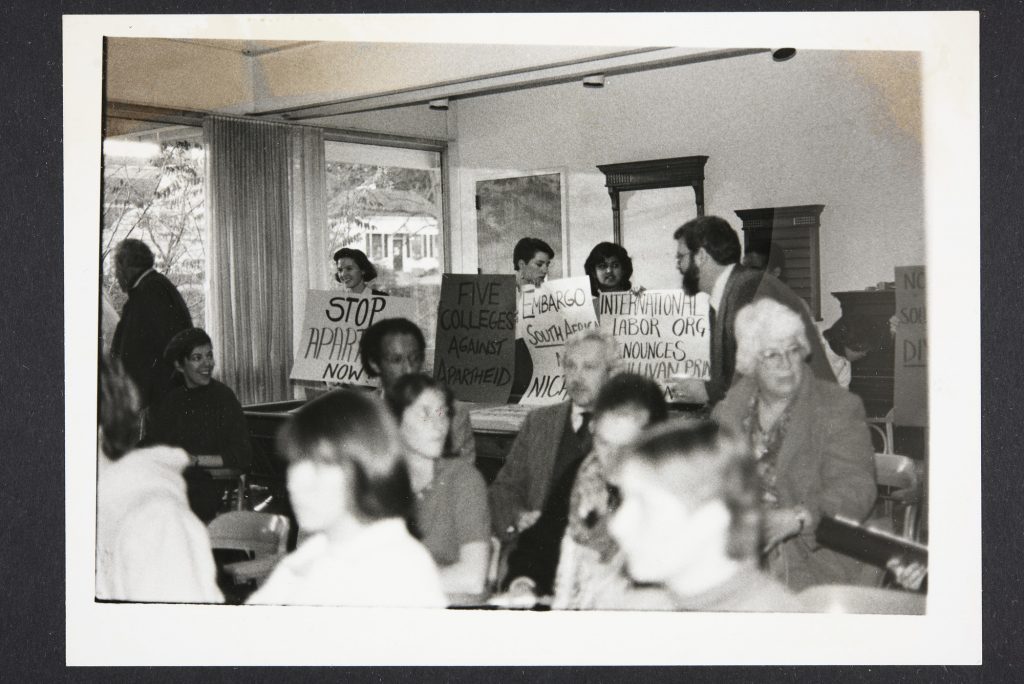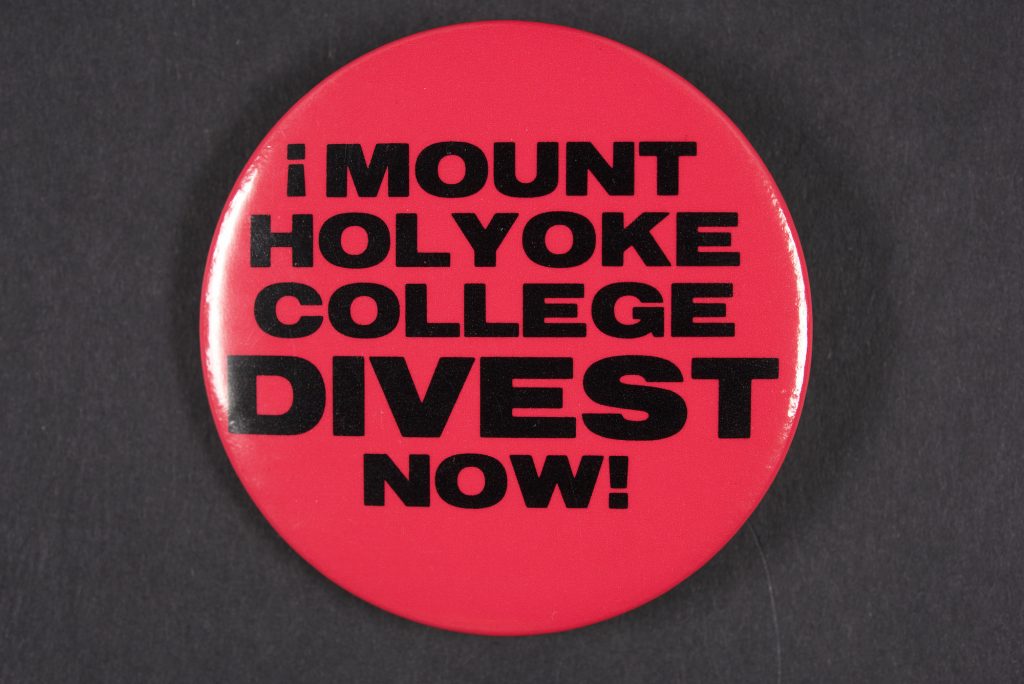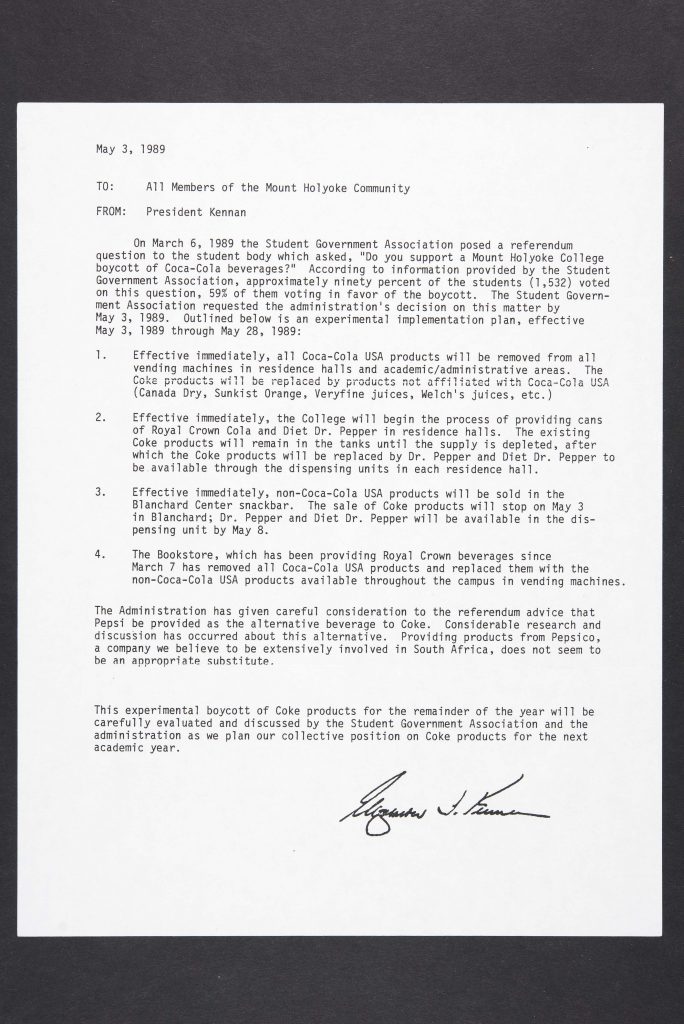When most people hear the word “divest” many connect the word to the “modern divest movement” relating to fossil fuels. The term “divest” however is not a word that can be identified or isolated to only one movement. Divesting funding was a tactic used by many groups and organizations in hopes that by applying pressure through funding change would occur. The term divest in this exhibit refers to divestment from companies that supported or allowed apartheid to exist in South Africa.
What is Apartheid?
White supremacy and racial segregation existed long before the existence of apartheid in South Africa. Such discrimination can be traced back to the Land Act of 1913 which marked the beginning of territorial segregation. Apartheid became official law in 1950; it was built upon beliefs of racism, segregation, and discrimination of Black South Africans. Apartheid policy was further refined in the late 1950s into a system referred to as “separate development.” Through apartheid the government prevented unification of Black South Africans and infringed on their lives.
Opposition of Apartheid
Resistance to apartheid took many forms and was ongoing over the years in South Africa. Apartheid however did not gain international interest until the 1960s due to the arrest and long-term imprisonment of Nelson Mandela. By the 1970s apartheid was a forefront issue discussed by many nations.
Mount Holyoke College was one of many schools to join in protesting apartheid. Protests at schools took many forms and was mainly focused on divesting from businesses that profited in South Africa. It is unclear exactly what year protests began but divestment seemed to become a Mount Holyoke concern around the 1970s. In response to community concern in relation to divestment the Committee of Social Responsibility (CSR) was created in 1978. The CSR served in advisory capacity as well as fostering communication between the campus and Board of Trustees. Due to increasing pressures from faculty and students, the Mount Holyoke College Board of Trustees voted to divest Mount Holyoke’s endowment from South African stocks in 1985. Yet by 1991 there was talk of reinvestment and it is unclear whether reinvestment did in fact occur but there is evidence present suggesting the College did reinvest. Such a decision calls into question the long-term success and effectiveness of the apartheid divestment protests.
Spreading the Word
Successful Boycotts
A major small-scale victory was the boycott of Coca-Cola on the MHC campus. Student’s protested at MHC and boycotted the product in the dining halls due to Coca-Cola’s investments in South Africa. Marches, building protests, and signed petitions aided in “kicking coke” off the MHC campus.
In the above document, President Kennan explains to the MHC community that Coca-Cola products will no longer be served at MHC and outlines the procedure for phasing out Coca-Cola products.
Are Student Voices Being Heard?
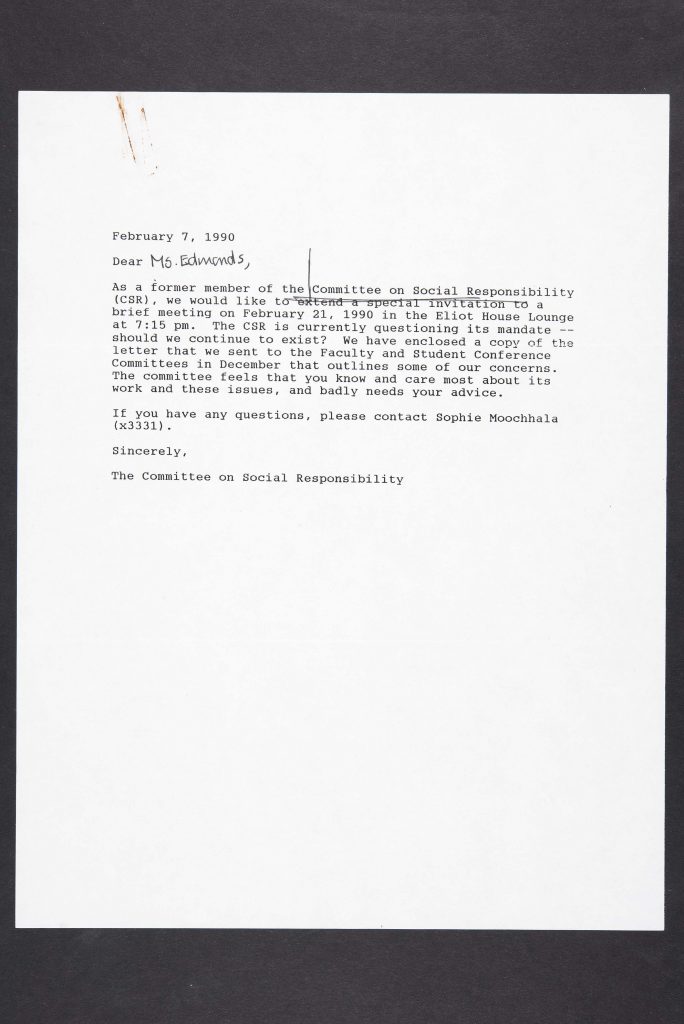
The above letter is one of many letters written by the CSR as well as members of the CSR who expressed doubt about the continuation of the CSR. For many years there were questions about whether the CSR should continue to exist. Since it was created, the CSR continuously expressed doubt at its effectiveness communicating with the college community as well as frustration with advising the Proxy Committee and Board of Trustees (who the CSR felt often did not heed their advice.)
This portion of the exhibition was curated by Mae Humphreville, 2019.
